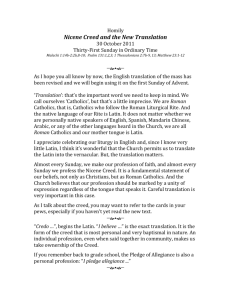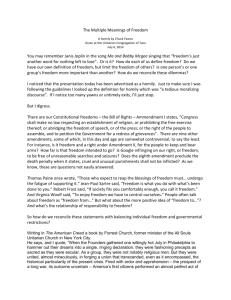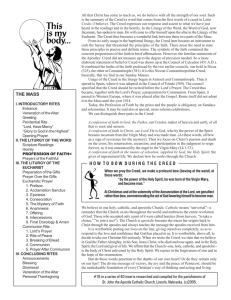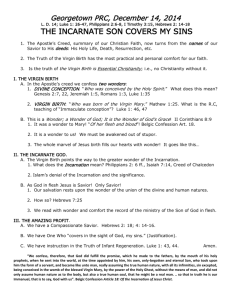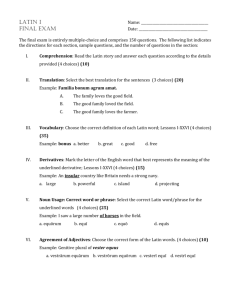Roman Missal Changes Part 7,8,9
advertisement
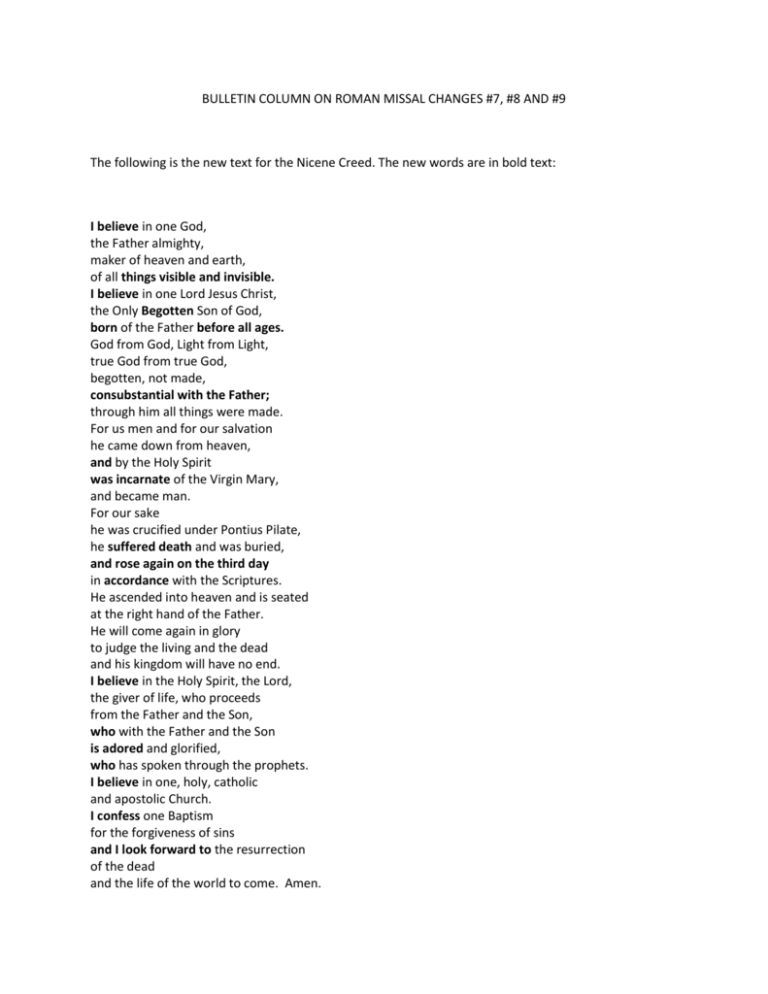
BULLETIN COLUMN ON ROMAN MISSAL CHANGES #7, #8 AND #9 The following is the new text for the Nicene Creed. The new words are in bold text: I believe in one God, the Father almighty, maker of heaven and earth, of all things visible and invisible. I believe in one Lord Jesus Christ, the Only Begotten Son of God, born of the Father before all ages. God from God, Light from Light, true God from true God, begotten, not made, consubstantial with the Father; through him all things were made. For us men and for our salvation he came down from heaven, and by the Holy Spirit was incarnate of the Virgin Mary, and became man. For our sake he was crucified under Pontius Pilate, he suffered death and was buried, and rose again on the third day in accordance with the Scriptures. He ascended into heaven and is seated at the right hand of the Father. He will come again in glory to judge the living and the dead and his kingdom will have no end. I believe in the Holy Spirit, the Lord, the giver of life, who proceeds from the Father and the Son, who with the Father and the Son is adored and glorified, who has spoken through the prophets. I believe in one, holy, catholic and apostolic Church. I confess one Baptism for the forgiveness of sins and I look forward to the resurrection of the dead and the life of the world to come. Amen. This creed was originally adopted at the Council of Nicaea in A.D. 325 and updated at the Council of Constantinople in A.D. 381. It is also referred to as the “Niceno-Constantinopolitan Creed”. The first change is quite obvious: We now say “I believe” instead of “We believe”. Other language groups have been using “I believe” in the vernacular because it is a straightforward translation of the Latin ”Credo”. This offers us another opportunity to reaffirm our personal faith, just as when individuals respond, “I do” if there is a renewal of baptismal promises during Mass. The next change is from “seen and unseen” to “visible and invisible”. The Latin “visibilium” and “invisibilium” convey a more specific demarcation between the bodily and the spiritual realms. For example, a child playing hide-and-seek may be unseen yet is still considered visible, whereas one’s guardian angel is indeed invisible by nature. The new Creed translation also recovers Christ’s title, “Only Begotten Son” (“Fili Unigenite”), which we see in the revised Gloria. To say the Son is “born of the Father before all ages” is a profound theological truth, for the Son is not “born” in the human sense of beginning one’s life, but eternally proceeds from the Father while being always fully God. Therefore, we profess that Jesus Christ is “begotten, not made”. The next part of the creed has an obvious change in wording: from “one in being” to “consubstantial with the Father”. “Consubstantial” (“consubstantialem” in Latin) is quite an unusual word that needs to be explained. It is a crucial early theological term, asserting that the Son is of the “same substance” with the Father-meaning He shares equally the Father’s divinity as a Person of the Holy Trinity. Although it basically carries the same meaning as “one in being”, the more precise use of “consubstantial” is an acknowledgement of how the Greek equivalent of the word was so important for safeguarding orthodoxy in the early Church. There is another important change in the middle of the Creed: “and by the Holy Spirit was incarnate of the Virgin Mary, and became man.” The current wording of “born of the Virgin Mary, and became man” can easily be misinterpreted to mean that Christ did not actually become man until the time He was born. However, the reality is that the Son of God took on human nature from the moment of His conception in the Blessed Virgin Mary’s womb, at the Annunciation. By using the term, ”incarnate”, the new translation leaves no ambiguity. One of the remaining minor changes in the new Creed translation is “I look forward to the resurrection of the dead,” by which one expresses a sincere desire, rather than simply “looking for” the resurrection. The Latin “exspecto” conveys a sense of anxious waiting and expectation!
